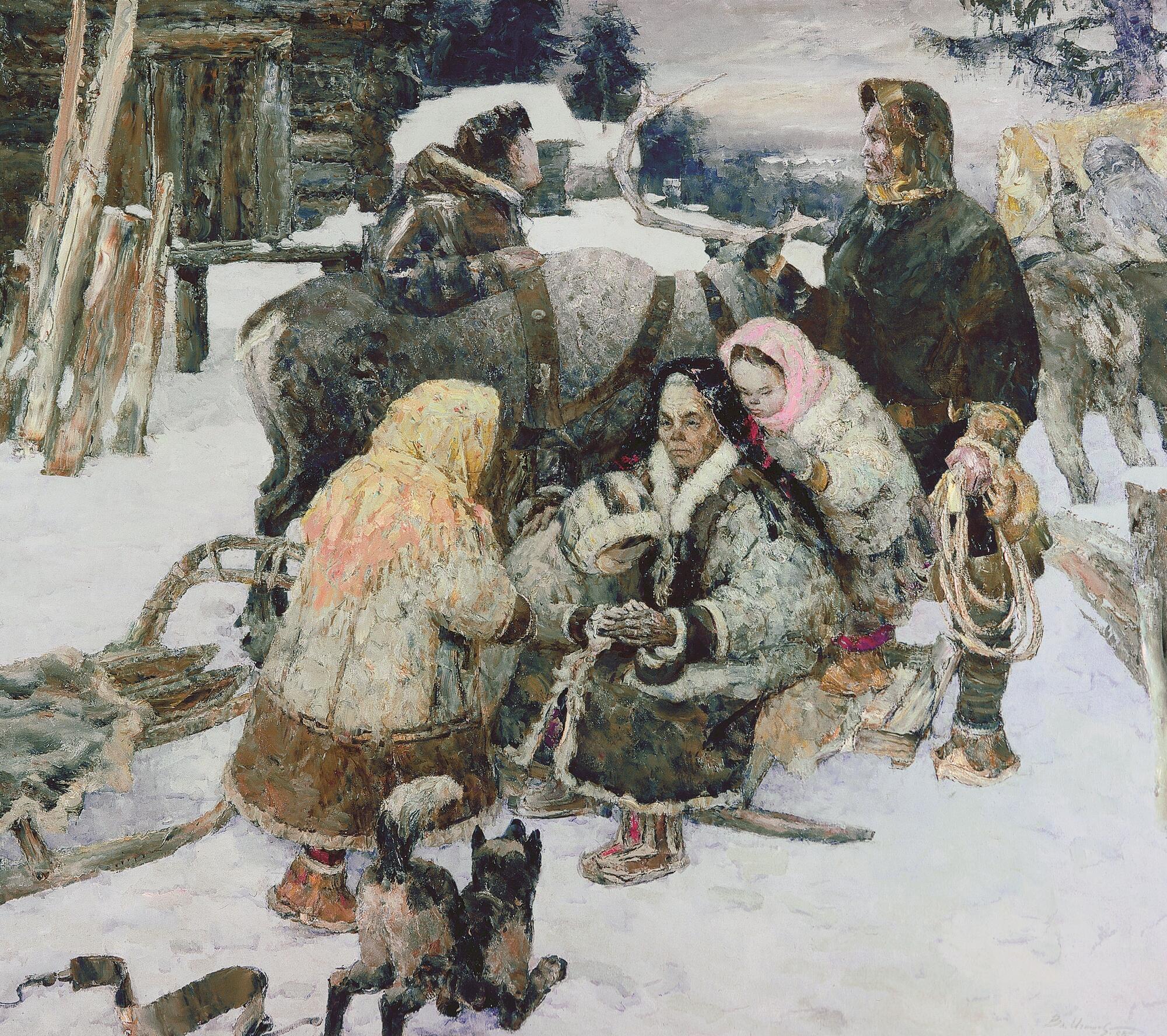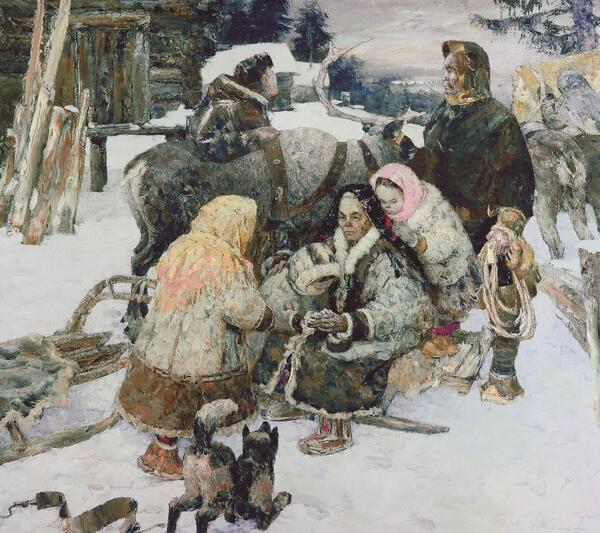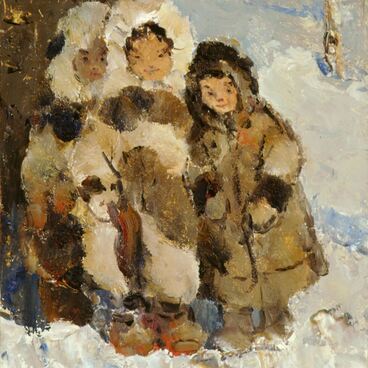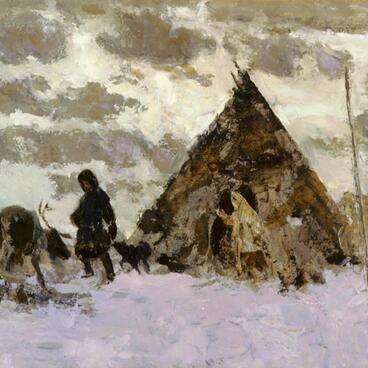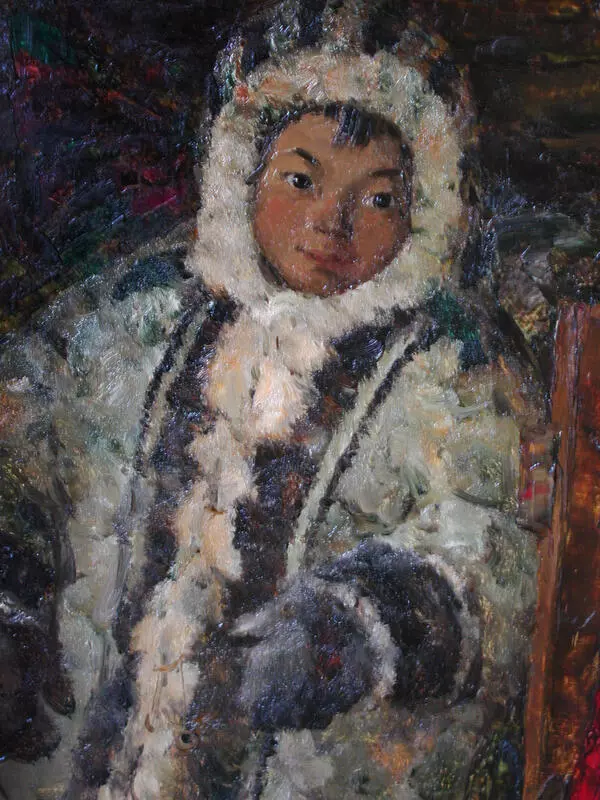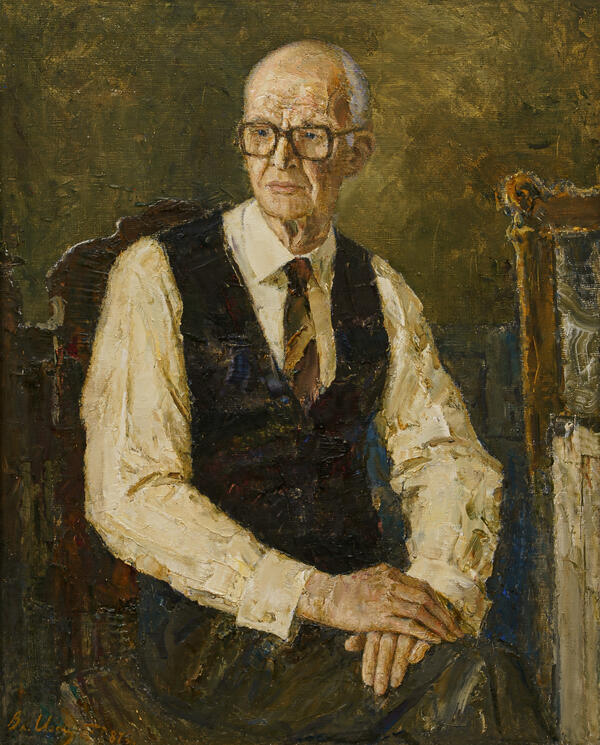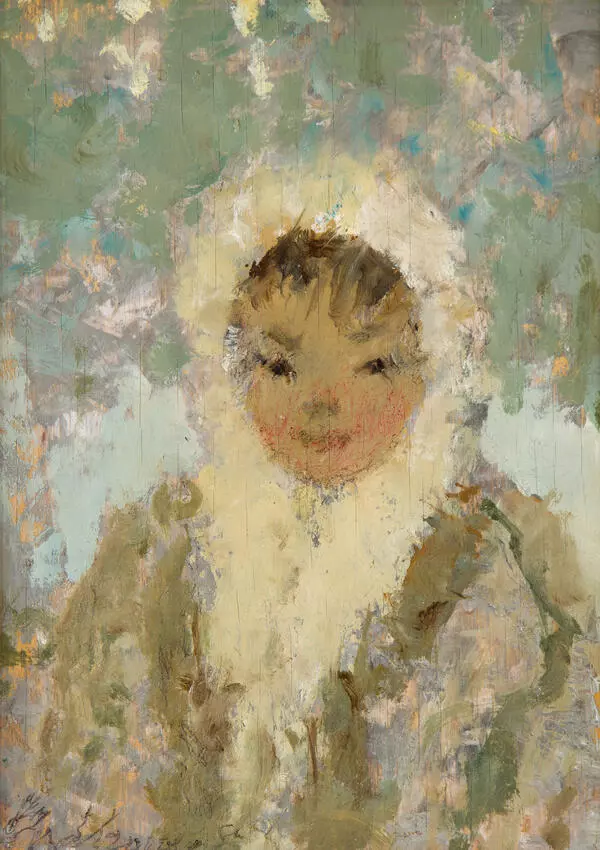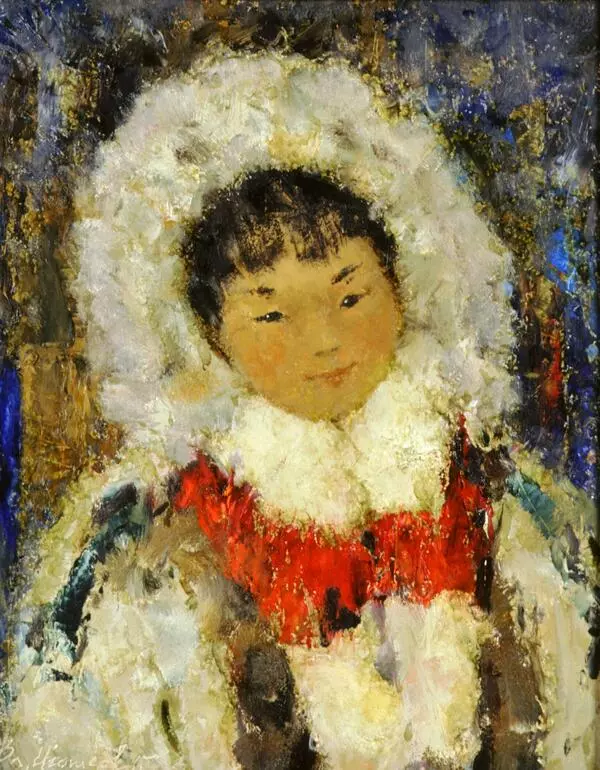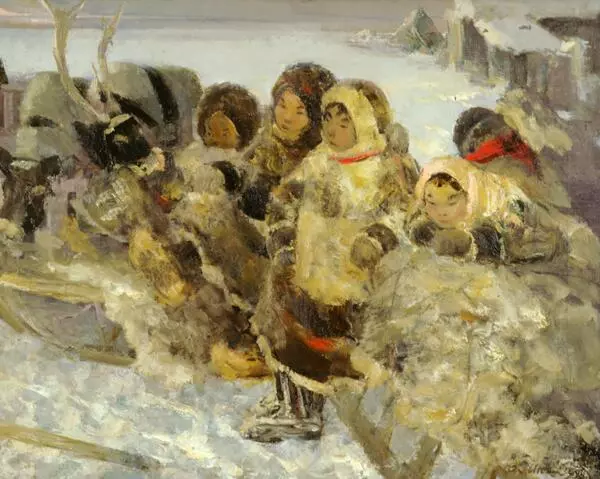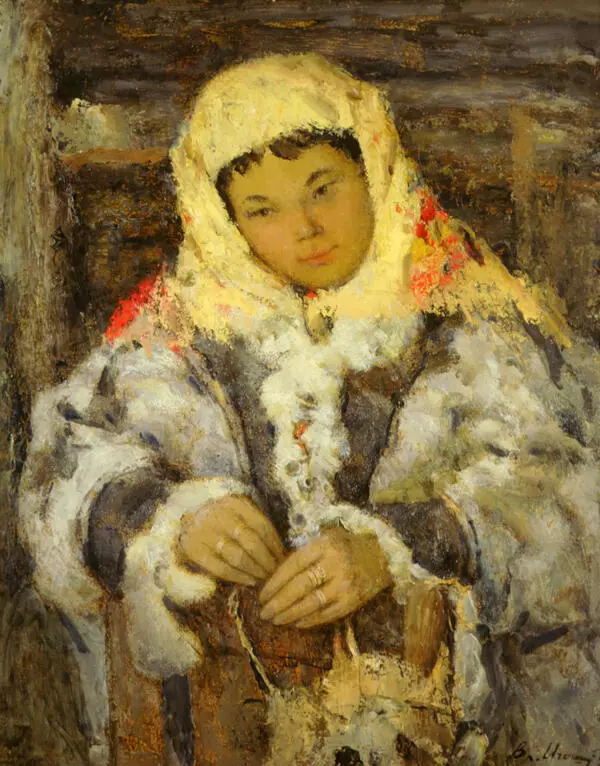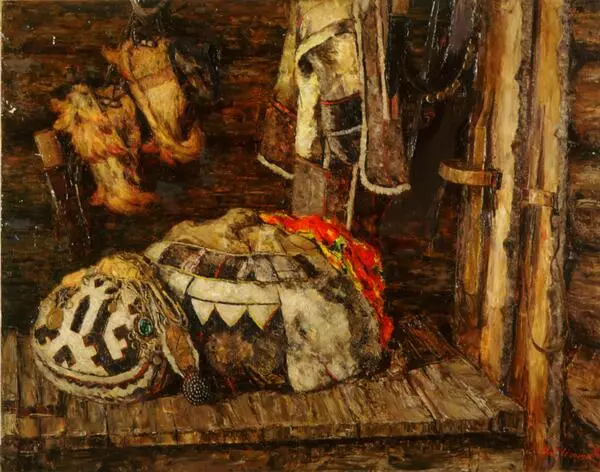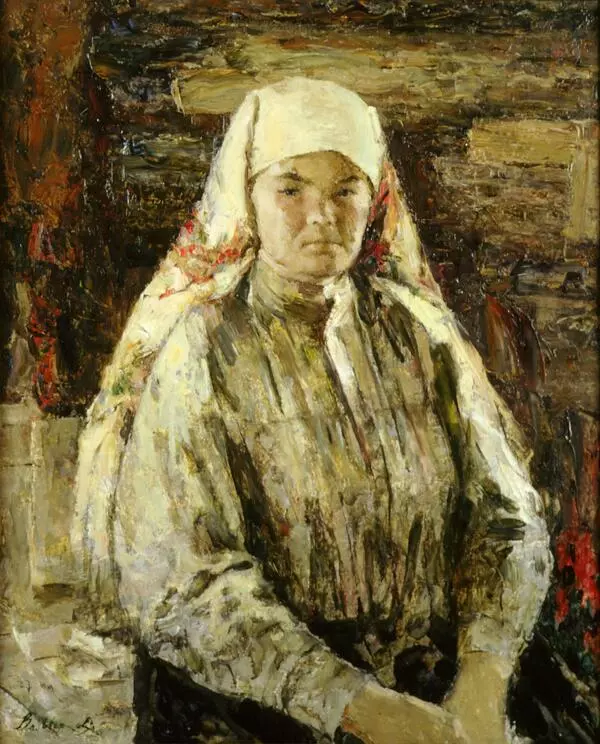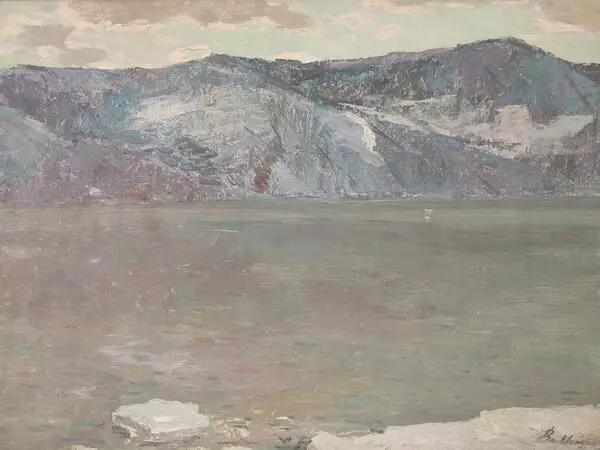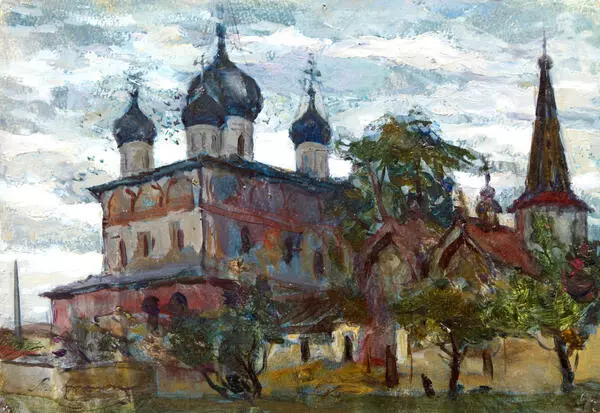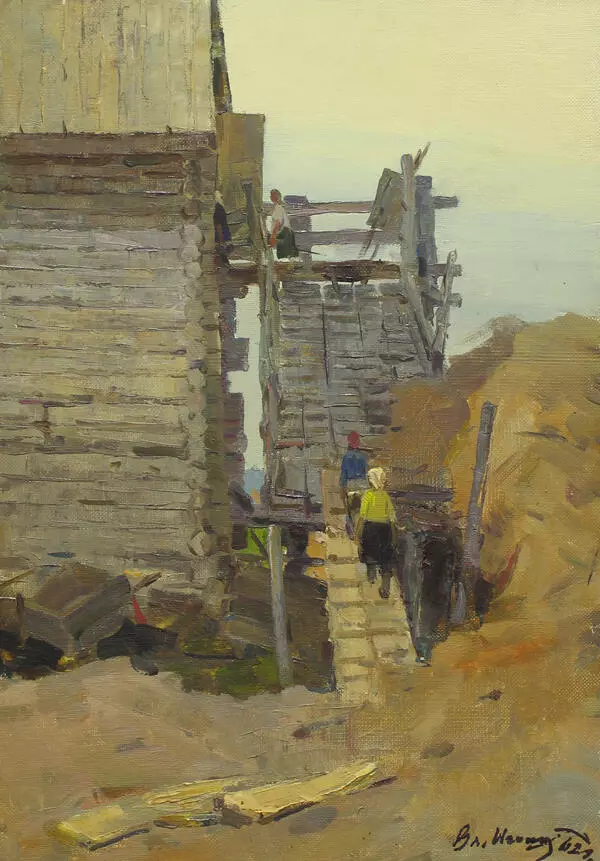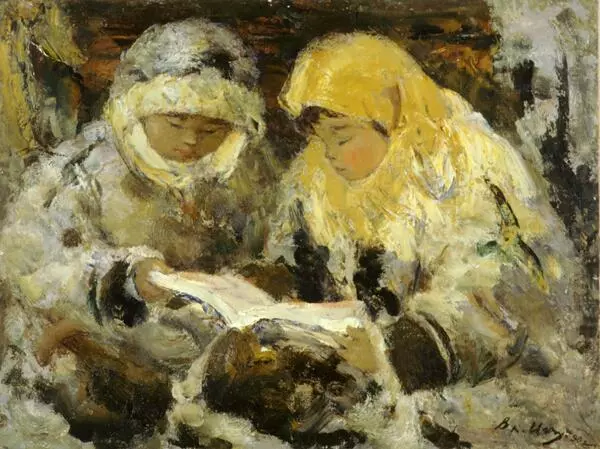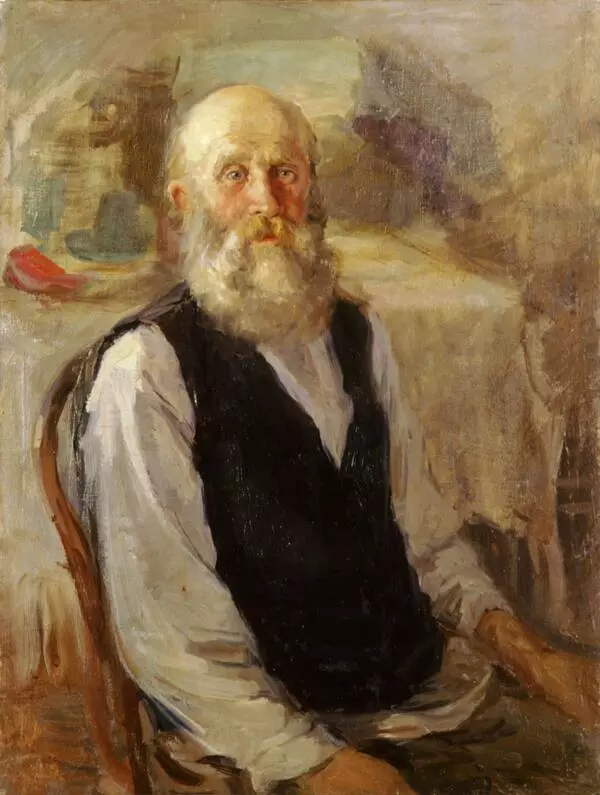The artist first visited Khanty-Mansi Okrug in 1954. In order to depict the beauty of the region in his paintings, the artist had to use helicopters, small planes and sleighs pulled by reindeer for transportation.
The Tasmanov Family is one of the largest works painted by Vladimir Igoshev. It was created as a result of long-term artist’s observations. He worked on it for more than two years, collected materials and made sketches of each character. The different generations of one family are depicted in the painting. The family lives according to its age-old traditions. The composition is arranged around an old woman, the elder member of the family. The man behind her back is her son, the head and the supporter of the family. It’s a generalized image, the images of characters were based on the sketches of different people.
The real Tasmanov family lived in the early 20th century in Khalpyavyl, nine kilometres from Nyaksimvol villege in the Northern Ural. There’s no consensus among the researchers about the exact time of the Mansi people’s formation in the Ural. It’s considered that Khanty and Mansi appeared as a result of the merge of ancient Ugric people and the tribes that lived in the Ural around 3000 years ago. The Ugric people, who lived in the south of the West Siberia and Northern Kazakhstan, were forced to leave their home grounds as a result of the Migration Period and go to the North and West (the territories of modern Hungary, Greater Black Sea area and the Kuban).
A reindeer is also depicted in the painting. The hooves of this animal change with the season. During summer, when the soil is soft, the hoof becomes spongy, and in winter the pads bare the edge of the hoof. It taps into the snow, so reindeer don’t slide and can easily dig reindeer lichen from the snow or ice. The female animals also have antlers. The grown male animals shed their antlers in November or December, the younger animals do so in April or May, the females shed their antlers in May or June. In such a way in winter female and young animals have antlers, while grown males don’t. Animals can migrate to long distances. Some of them walk around 35 km a day. Half an hour after its birth a calf can walk, and in a few hours it can cover a few kilometers.
The Tasmanov Family is one of the largest works painted by Vladimir Igoshev. It was created as a result of long-term artist’s observations. He worked on it for more than two years, collected materials and made sketches of each character. The different generations of one family are depicted in the painting. The family lives according to its age-old traditions. The composition is arranged around an old woman, the elder member of the family. The man behind her back is her son, the head and the supporter of the family. It’s a generalized image, the images of characters were based on the sketches of different people.
The real Tasmanov family lived in the early 20th century in Khalpyavyl, nine kilometres from Nyaksimvol villege in the Northern Ural. There’s no consensus among the researchers about the exact time of the Mansi people’s formation in the Ural. It’s considered that Khanty and Mansi appeared as a result of the merge of ancient Ugric people and the tribes that lived in the Ural around 3000 years ago. The Ugric people, who lived in the south of the West Siberia and Northern Kazakhstan, were forced to leave their home grounds as a result of the Migration Period and go to the North and West (the territories of modern Hungary, Greater Black Sea area and the Kuban).
A reindeer is also depicted in the painting. The hooves of this animal change with the season. During summer, when the soil is soft, the hoof becomes spongy, and in winter the pads bare the edge of the hoof. It taps into the snow, so reindeer don’t slide and can easily dig reindeer lichen from the snow or ice. The female animals also have antlers. The grown male animals shed their antlers in November or December, the younger animals do so in April or May, the females shed their antlers in May or June. In such a way in winter female and young animals have antlers, while grown males don’t. Animals can migrate to long distances. Some of them walk around 35 km a day. Half an hour after its birth a calf can walk, and in a few hours it can cover a few kilometers.
